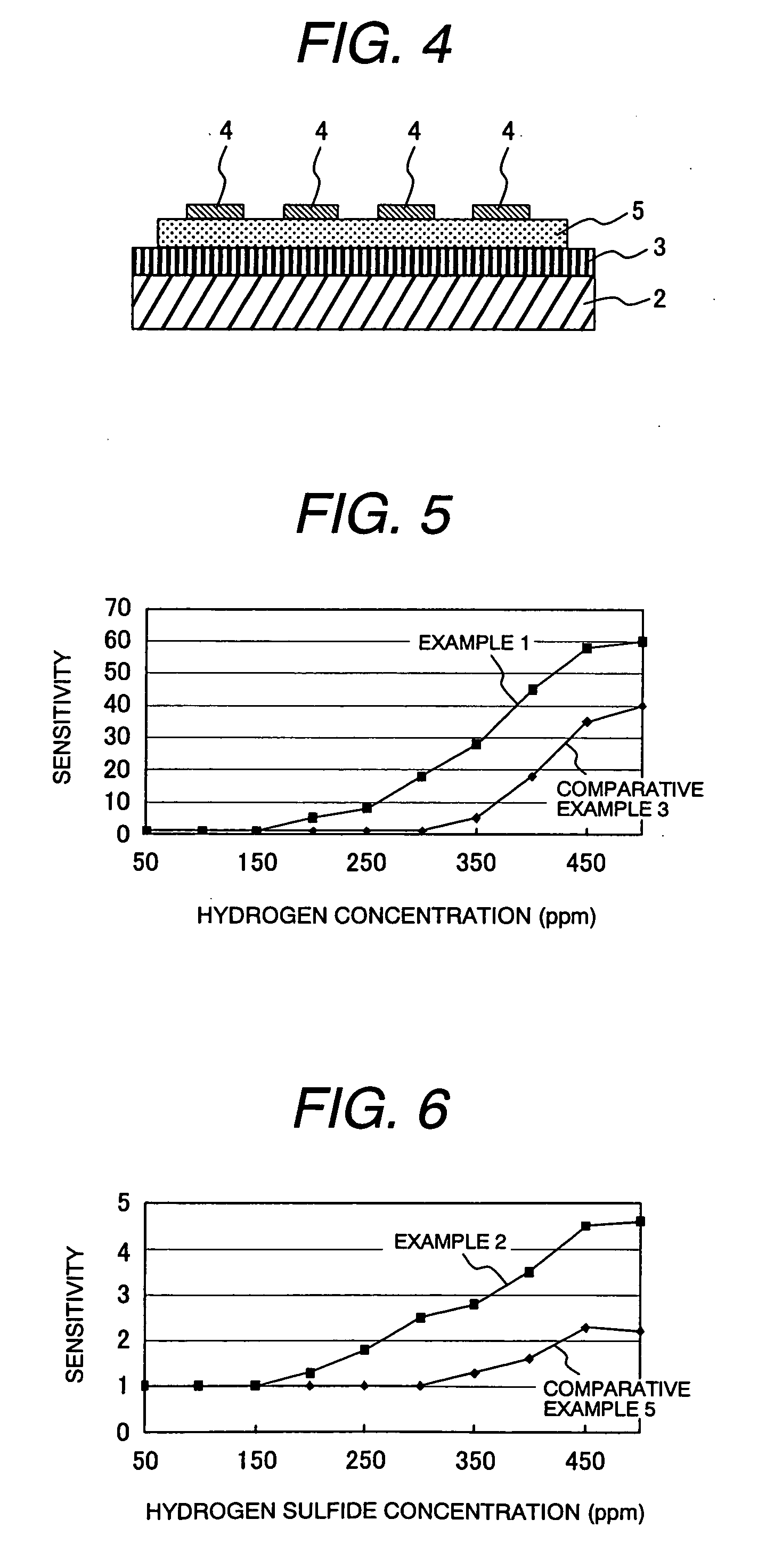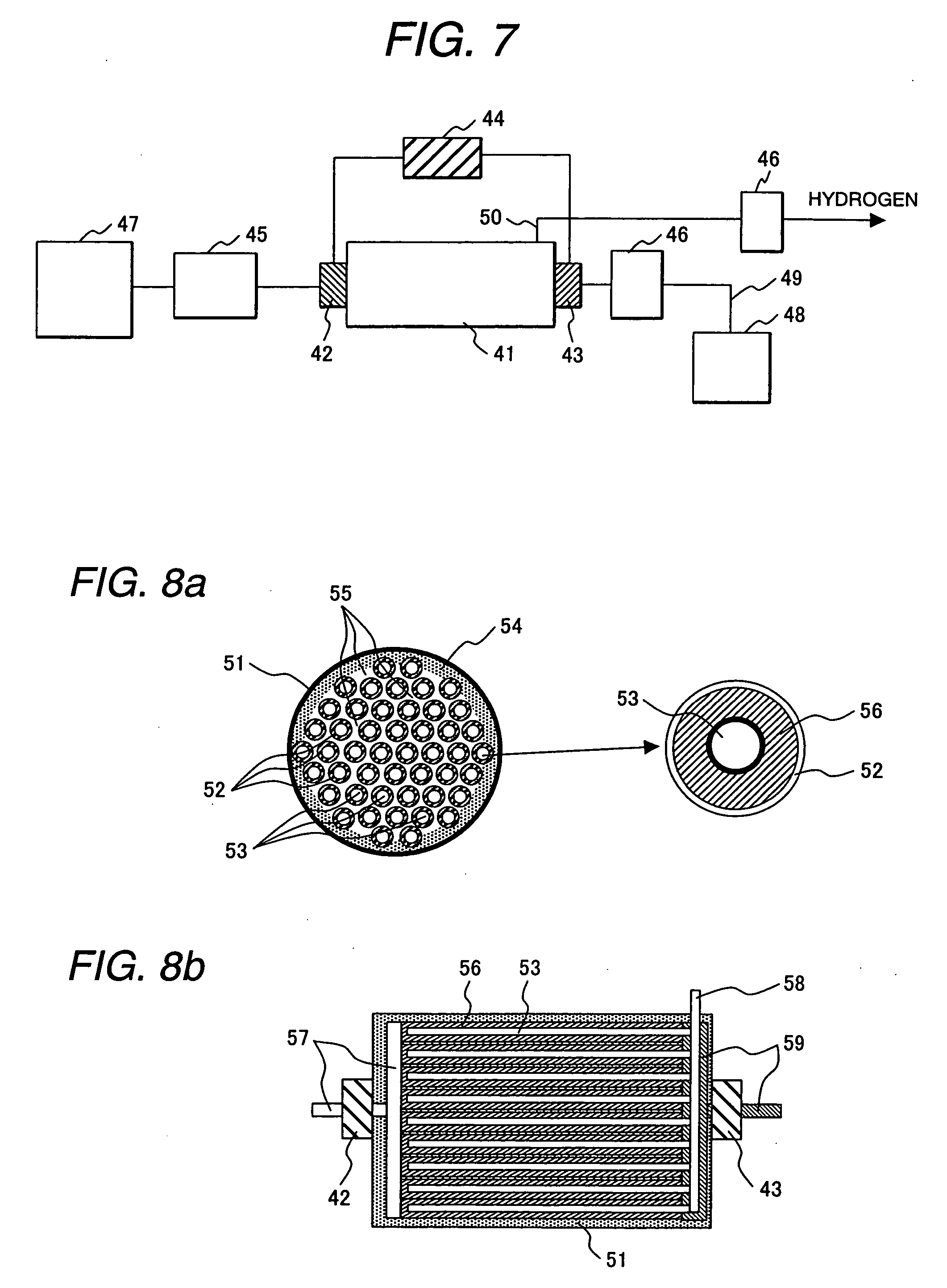Metal oxide materials, production method thereof, and application thereof
a technology of metal oxide materials and production methods, applied in the field of metal oxide particles or mesoporous metal oxide particles, can solve the problems of increasing the crystallite diameter, and difficulty in controlling the crystallite diameter of the oxide crystal to the range of not less than 1 nm and not more than 2 nm, so as to prevent the collapse of the mesoporous structure associated, suppress the crystal growth, and suppress the effect of crystal growth
- Summary
- Abstract
- Description
- Claims
- Application Information
AI Technical Summary
Benefits of technology
Problems solved by technology
Method used
Image
Examples
example 1
(Formation of Mesoporous Silica)
[0044] To a reaction vessel containing 30 g of water and 120 g of hydrochloric acid (2 M) was added 4.0 g of Plutonic P123 (manufactured by BASF) for dissolution, and the solution was heated to 35° C. To this solution was added 8.5 g of tetraethoxysilane, and the mixture was stirred at 35° C. for 20 hours, and then, at 80° C. for 10 hours. The reaction solution was cooled to room temperature, and filtered to obtain white particles. The resulting white particles were washed 3 times with water, dried at 100° C., and calcined at 500° C. for 6 hours to produce mesoporous silica. The peak in the pore diameter distribution curve measured by BJH method was at 6 nm, and the specific surface area measured by BET method was 900 m2 / g. Regular mesoporous structure was observed in X-ray diffraction analysis.
(Formation of Silica Filled with Tin Oxide)
[0045] A solution prepared by mixing SnCl4 and water at a rate of 3.5 g of water to 5.2 g of SnCl4 was added dr...
example 2
(Formation of Mesoporous Silica)
[0063] Mesoporous silica was produced by repeating the procedure of Example 1.
(Formation of Silica Filled with Tungsten Oxide)
[0064] A solution by mixing tungsten chloride, ethanol, and water at a rate of 7.2 g of tungsten chloride, 3.0 g of ethanol, and 0.5 g of water was added dropwise to 500 mg of the mesoporous silica produced by repeating the procedure of Example 1 until the solution fully penetrated into the pores of the mesoporous silica to thereby impregnate the pores of the mesoporous silica with the tungsten oxide precursor. The filled mesoporous silica was subsequently subjected to the hydrolysis and calcination by repeating the procedure of Example 1.
(Formation of Mesoporous Tungsten Oxide)
[0065] The silica part was dissolved by repeating the procedure of Example 1 to produce mesoporous tungsten oxide. Specific surface area of the thus obtained mesoporous tungsten oxide was 180 m2 / g. Crystallite diameter calculated by Scherrer equa...
example 4
[0074] A solution prepared by mixing tungsten chloride, ethanol, and water at a rate of 7.2 g of tungsten chloride, 3.2 g of ethanol, and 0.5 g of water was added dropwise to 500 mg of the mesoporous silica, and by using this paste, a gas detection element was produced by repeating the procedure of Example 3.
PUM
 Login to View More
Login to View More Abstract
Description
Claims
Application Information
 Login to View More
Login to View More - Generate Ideas
- Intellectual Property
- Life Sciences
- Materials
- Tech Scout
- Unparalleled Data Quality
- Higher Quality Content
- 60% Fewer Hallucinations
Browse by: Latest US Patents, China's latest patents, Technical Efficacy Thesaurus, Application Domain, Technology Topic, Popular Technical Reports.
© 2025 PatSnap. All rights reserved.Legal|Privacy policy|Modern Slavery Act Transparency Statement|Sitemap|About US| Contact US: help@patsnap.com



